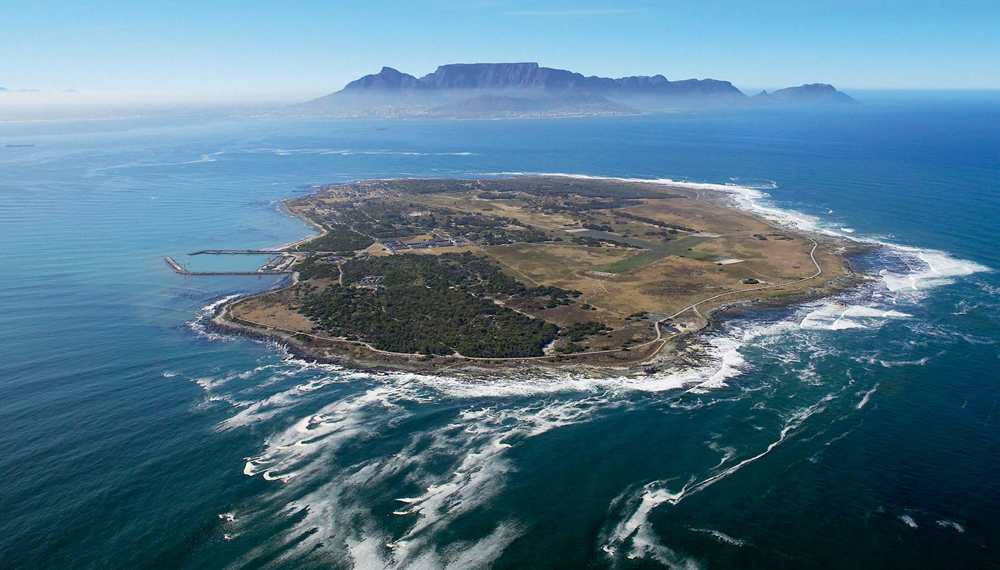




The first documented mention of Robben Island was by the Portuguese explorer Vasco da Gama, who landed on the island in 1496 to slaughter seals for their meat and oil. From the 1500s the island was a regular port of call for seafarers who needed to replenish their stores.
By 1654 there was a small community on the island. Shepherds cared for small flocks of sheep and goats, shelters were built, and a vegetable garden started. The first group of prisoners (slaves and exiles) were sent to the island in 1657 and worked at quarrying limestone and slate. In the eighteenth century the prison population consisted of political prisoners banished from their native countries in the East Indies for resisting Dutch rule, as well as pirates and bandits.
In the 1800s, under British rule, the island was not only used as a prison. It was the site of a whaling station and a stone quarry, and persons with infectious diseases were quarantined there.
In the 1840s many of the criminal prisoners were returned to the mainland, where they were put to work as labourers, constructing roads, and maintaining passes and bridges in the Cape Colony.
The lighthouse on the island, designed by the Colonial Engineer John Scott Tucker and built in 1865, was constructed from locally quarried stone. In the second half of the nineteenth century a hospital, known as the General Infirmary, was built on the island to house lepers, lunatics and paupers.
In 1875 the island had a population of 552, according to the census returns. By 1891 this figure had risen to 702, and by 1904 the population was 1 460.
In the early twentieth century the chronic sick were gradually removed to the mainland, and in the 1920s the mental patients were transferred to Valkenberg Asylum. The leper hospital was closed in 1931.
For some years after this, Robben Island was largely abandoned. When the Second World War broke out, it was decided to fortify the island against possible attack and two gun batteries were constructed. Thousands of troops, including women of the Women’s Auxiliary Army Corps and the South African Women’s Auxiliary Naval Service, were stationed on the island throughout the war. Subsequently, from 1946, a Permanent Force unit, the Coastal Artillery School, was established on the island and army gunners and their families settled there. When the School became a branch of the navy in the 1950s, the island became a navy training base known as SAS Robbeneiland.
In the 1960s the island once again became a prison. Following the Rivonia Trial, the senior leadership of the banned African National Congress (ANC), including Nelson Mandela, Walter Sisulu, Govan Mbeki and Ahmed Kathrada, were sent here. Also imprisoned was Robert Sobukwe, the leader of the banned Pan Africanist Congress (PAC), who was kept in a small cottage isolated from contact with other prisoners. Conditions on the island were harsh and unrelenting, with the political prisoners compelled to labour in the island’s limestone quarry. Convicted criminals were housed in a separate facility.
Change was a long time in coming, and it was only in the 1980s that Mandela and other high-profile prisoners were transferred to facilities on the mainland. Mandela walked out from Victor Verster prison, outside Paarl, a free man again, in February 1990, and by the end of 1991 the remaining political prisoners on Robben Island had been released. The island continued to house convicted criminals until 1996.
Today Robben Island is a museum commemorating the injustices of the past and is visited by tens of thousands of people each year. In 1999 it was declared a UNESCO World Heritage Site.
